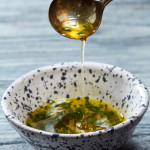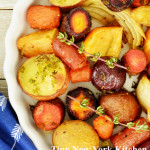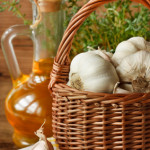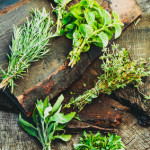Whether you’re hosting your first Thanksgiving or you’ve been making the family feast for decades, refer to our Thanksgiving timeline checklist to keep your prepping, shopping, and cooking on track for the big day.
1 TO 2 WEEKS BEFORE THANKSGIVING
Confirm the number of guests and plan your menu
Order your turkey
Plan your table setting, serving dishes, and decorations
Read through all your recipes to determine the food and cooking equipment you will need
Make your shopping and to-do lists
Shop for nonperishable food items, plus any cooks’ tools, cooking equipment and tableware you need
A FEW DAYS BEFORE
Prepare the turkey brine, but do not add the turkey, cover and refrigerate
Prepare food that can be made several days ahead of time, such as pie pastry and cranberry sauce
THE DAY BEFORE
Complete your food shopping
If you ordered a fresh turkey, pick it up or have it delivered
If you are brining the turkey, place it in the brine and refrigerate
Prepare dishes that can be made in advance such as soups and pies
Chop vegetables for side dishes; refrigerate in covered bowls or sealable plastic bags
Peel and cut the potatoes, place in cold water and refrigerate
Set the table
THANKSGIVING DAY
Refrigerate wines that need chilling
Prepare the stuffing and other side dishes
Prepare the turkey for roasting and put in the oven at the determined time
If you plan to stuff the turkey, do not stuff it until just before you put it in the oven
While the turkey is roasting, make the mashed potatoes
While the turkey is resting, make the gravy and cook or reheat the side dishes
Carve the turkey and serve your guests
Have a wonderful Thanksgiving!
“Work With What You Got!”
©Tiny New York Kitchen © 2018 All Rights Reserved
Prior to 2014, U.S. states and Canadian provinces each had separate systems for grading their maple syrup. The objective was to quantify the syrup’s distinct range of colors and flavors as the sugaring season progressed. Early in the season, sap tends to yield a lighter, more delicate syrup with vanilla flavor notes. As the weeks go by, darker syrup with stronger, deeper flavor is produced. Whatever the color and flavor, all pure maple syrup has a maple sugar content of 66.9%.
Where there used to be three grades (A through C), all pure maple syrup is now considered Grade A, and consumers must shift their attention to the descriptive language found after the letter grade. Those adjectives have also changed to give more detail.
Golden Color & Delicate Taste: The lightest and most delicate syrup, best enjoyed in poured-over form; formerly known as “Fancy.”
Amber Color & Rich Flavor: Amid-season syrup, darker and more robust. Good for glazes, baking, and stirring into cocktails or over hot cereal; formerly known as Dark Amber or Grade B.
Very Dark & Strong Flavor: The darkest and most intense of all the grades, it’s suited to use in recipes that call for molasses. Until recently, this syrup wasn’t sold to consumers: it went to candy and commercial food producers for maple-flavored products. Formerly known as Grade C.
“Work With What You Got!”
©Tiny New York Kitchen © 2018 All Rights Reserved
In a bowl mix baby greens or baby spinach with 1 peeled, quartered and thinly sliced apple or pear. 1 apple or pear for every 2 people. Pour over enough Maple Mustard Dressing to moisten. Transfer to salad bowls and garnish with toasted chopped pecans and crumbled gorgonzola cheese. Enjoy!
“Work With What You Got!”
©Tiny New York Kitchen © 2018 All Rights Reserved
This fall Tiny New York Kitchen celebrates sweet parsnips, earthy beets, and mild turnips. These root vegetables offer flavor, nutrition, and versatility.
Look for root vegetables that are firm to the touch with smooth, blemish-free skin. If there are any greens attached, make sure they look fresh, not wilted.
Before storing parsnips, beets, and turnips, remove any greens and brush off any dirt. Wrap in a damp paper towel, place in a plastic bag, and store in the refrigerator crisper; most roots will last up to two weeks.
Root vegetables absorb nutrients from the soil they grow in, including antioxidants, iron, and vitamins A, B, and C. They also provide fiber, which helps you feel fuller longer. To maximize your fiber intake, leave the skin on and give parsnips and carrots a good scrub instead.
Parsnips: These pale, carrot-like root vegetables are sweet and earthy. They can be roasted, sautéed, mashed, and puréed. Choose small to medium parsnips, since larger ones can be woody.
Beets: Beets can be red, golden, or striped. Whether roasted, boiled, or steamed, they’re slow to cook, but packaged precooked versions are also an option. You can even enjoy beets raw. Simply peel and grate or thinly slice.
Turnips: Creamy white with pinkish-purple tops, turnips turn mellow and tender when cooked. Try them roasted, sautéed, mashed, or added to soups and stews.
Greens: If you’re lucky, your beets and turnips will have greens attached. These edible, nutritious, and delicious greens should always be removed for storage, as they pull moisture from the root ends. Wash the greens and use to make pesto, or sauté with garlic and oil for a quick side dish or simple pasta.
“Work With What You Got!”
©Tiny New York Kitchen © 2018 All Rights Reserved
How to cook rich, perfectly roasted winter squash without any prep work. This method works for winter squash of any size, so adjust the roasting time as needed.
Preheat oven to 400 degrees.
Roast the whole squash on a baking sheet until the skin is papery and a fork inserted into two or three different spots reveals very tender flesh (45 minutes per pound).
Remove from oven and set aside until cool.
Breakfast. Lunch. Dinner. Have squash for them all!
Start by cooking a whole winter squash.
Breakfast
Add cooked cubes of butternut squash, grated Gruyere cheese and chopped sage to a frittata mixture.
Lunch
Meal-prep lunches by layering cooked spaghetti squash, marinara sauce and meatballs or shredded chicken.
Dinner
Add thick slices of cooked acorn squash (you can keep the skin on) to soup or stew during the last few minutes of cooking.
“Work With What You Got!”
©Tiny New York Kitchen © 2018 All Rights Reserved
What’s the deal with pre-minced garlic?! Here at Tiny New York Kitchen we’re generally not big fans of buying already prepped vegetables, but jarred minced garlic is actually the worst. Stored in water or oil and kept shelf-stable with the help of chemical preservatives, it smells and tastes like a bad joke about garlic. Bitter and funky (and not in a good way), it’s the stuff that gives the allium a bad name.
“Work With What You Got!”
©Tiny New York Kitchen © 2018 All Rights Reserved
Fall squash transforms into a rich, smooth spread laced with apple cider, honey, and plenty of warm spices. Many eat it at breakfast, spreading a spoonful on cream cheese topped toast. This delicious preserve is the perfect vehicle for adding complex pumpkin flavor to almost anything. Stir it into whipped cream for a mouse-like dessert or coffee topper. Add a large dollop to your favorite pancake batter for an autumnal twist. Or go savory and melt some into a mixture of browned butter, sage, shallots, and crushed red pepper for an addictive pasta sauce.
You may also want to make pumpkin butter with other squashes as well. Butternut Squash is nutty and lightly sweet with a creamy texture. Delicata Squash has a flavor reminiscent of sweet potatoes with a fine, smooth texture. Long Island Cheese Pumpkin has a dense and very sweet pumpkin flavor with an earthy, savory finish.
www.tinynewyorkkitchen.com
“Work With What You Got!”
©Tiny New York Kitchen © 2018 All Rights Reserved
Nothing compares to crisp and juicy in-season apples, and now is the perfect time to make the most of them in both sweet and savory dishes.
Pick Like A Pro
When shopping, avoid apples with nicks, bruises, or soft spots and seek out fruit that’s firm and heavy for its size. Make sure the skin is smooth and shiny, as dull skin is often a sign that apples are lacking in taste and texture.
Keep Cold
Apples lose their crispness at room temperature, so be sure to store them in the refrigerator, where they’ll keep for up to three weeks. Separate soft or bruised apples, which can cause perfectly good ones to soften more quickly.
Know The Benefits
Apples are more than just a low-calorie snack. They’re also packed with fiber, which has been shown to reduce the risk of some cancers, as well as heart disease. Plus, fiber keeps tummies feeling full, so you’re less apt to reach for sugary treats.
Apples Love Lemons
A squeeze of lemon juice helps keep cut-up apples from browning.
www.tinynewyorkkitchen.com
“Work With What You Got!”
©Tiny New York Kitchen © 2018 All Rights Reserved
Fresh herbs have delighted the senses and tantalized the taste buds for centuries. In medieval times great bundles of herbs were strewn on castle floors as a natural air purifier. Brides often chose to wear delicate crowns of flowers interwoven with herbs upon their heads, and both Western and Eastern medical practitioners may employ herbal remedies for their patients.
Many cooks are quite passionate about utilizing herbs in their favorite recipes. Especially bountiful herbs, which perfume our summer and fall gardens with beautiful scents and enhance the plate with their wonderful array of flavors. Using fresh herbs allows cooks to cut back on unnecessary salt, fat, and sugars, while naturally elevating main ingredients.
Brimming with health benefits, each herb plays a special role in beautifying and fortifying the body. Rosemary, for example, may improve memory. Parsley is packed with apigenin, which could potentially reduce the chances of cancerous growths and tumors. Oregano, like all other herbs, has anti-inflammatory properties that may reduce joint inflammation. Oregano is also particularly anti-bacterial and anti-fungal, and can contribute to flawless skin and glossy hair. The calcium content in basil and parsley can help maintain healthy teeth. Mint is calming and soothing and can be a digestive aid. The heady aroma of fresh herbs may help relieve any effects of nausea, as well as soothing and reviving the senses.
Basil’s affinity with tomatoes is a most engaging taste combination. Serve sun warmed tomatoes sprinkled with shards of fresh basil leaves and drizzled with olive oil. The slightly sharp bite of chives enlivens potatoes, eggs and salad dressings. Cilantro is a must for Mexican and Asian dishes. Dill adds a light, lovely layer to fish, while the snappy tang of parsley is delightful in tabouli, potato salad, and pasta. Mint is essential for tall glasses of cold ices tea or lemonade and also for embellishing summer fruit platters. Transport your taste buds by making a salad with a bounty of vegetables and a large handful of freshly minced oregano, basil, parsley, and dill. Or scent your grill with the woody stalks of rosemary. They make great skewers, infusing meat, fish, and vegetables with bright, strong flavors.
Clean herbs by soaking in a bowl of cool water, changing the water several times, or until you no longer see any dirt in the bottom of the bowl. Spin dry in a salad spinner or on layers of paper towels. For hot dishes, add herbs at the end of cooking time to avoid diluting their essence.
“An herb is the friend of physicians and the praise of cooks.” – Charlemagne
www.tinynewyorkkitchen.com
“Work With What You Got!”
©Tiny New York Kitchen © 2018 All Rights Reserved
At the end of summer, farmers’ markets overflow with beautiful tomatoes. The splendid summer heat has ripened the Big Girls and Boys, Beefsteaks, Jet Stars, Yellow Pears, Sweet 100’s, and heirloom varieties such as Oxheart, Cherokee Purple and Brandywine to a fantastic state of rich, sweet, succulence.
How glorious is the site of these swollen, scarlet fruits, tumbling off the vine, so heavy and full of pure, natural flavor?
Summer fresh tomatoes are incredibly delicious. Simplistic summer tomato preparations are culinary heaven. Slice up some of these beauties, whatever color and size, arrange on a platter and drizzle with a bit of extra virgin olive oil and dust with a smattering of fresh basil. Take a bite and savor the taste of sunshine.
Chopped and mixed with minced garlic, fresh oregano leaves and balsamic vinegar, and piled onto crisp toast, fresh tomatoes become a sophisticated bruschetta, a perfect prelude to dinner on a sultry summers’ night.
Whether roasted and blended into a silky soup, or stirred up into a sensational salsa, with a zesty bite of jalapeno and cilantro, or sandwiched with thick, crisp bacon, basil mayonnaise and creamy avocado slices, the humble tomato turns grandly gourmand as the cooks’ love child of summer.
Pomme d’amour, or “love apples”, as tomatoes are sometimes referred to in France, love the body inside and out.
Purifying the blood, improving the texture and color of skin, tomatoes also protect against infection, as they are a natural antiseptic. Tomatoes also contain nicotinic acid, which may reduce blood cholesterol, and as a powerhouse source of lycopene, tomatoes are considered to be an amazingly potent antioxidant, capable of staving off the growth of numerous types of cancer.
Prepare your delicious life with lush and lovely homegrown summer tomatoes.
“Work With What You Got!”
©Tiny New York Kitchen © 2018 All Rights Reserved















